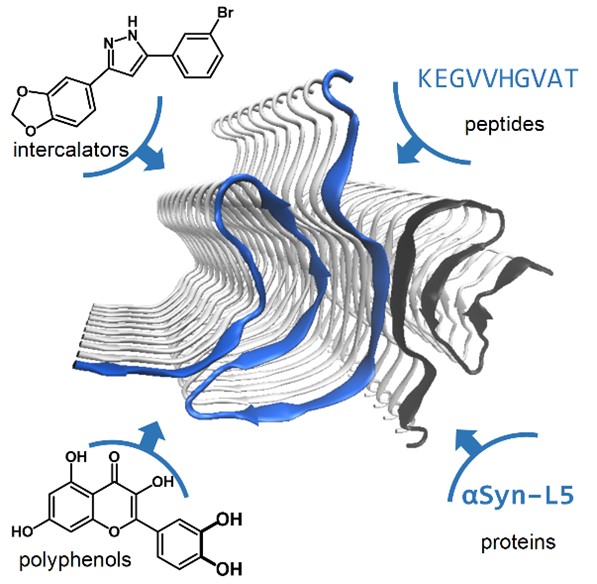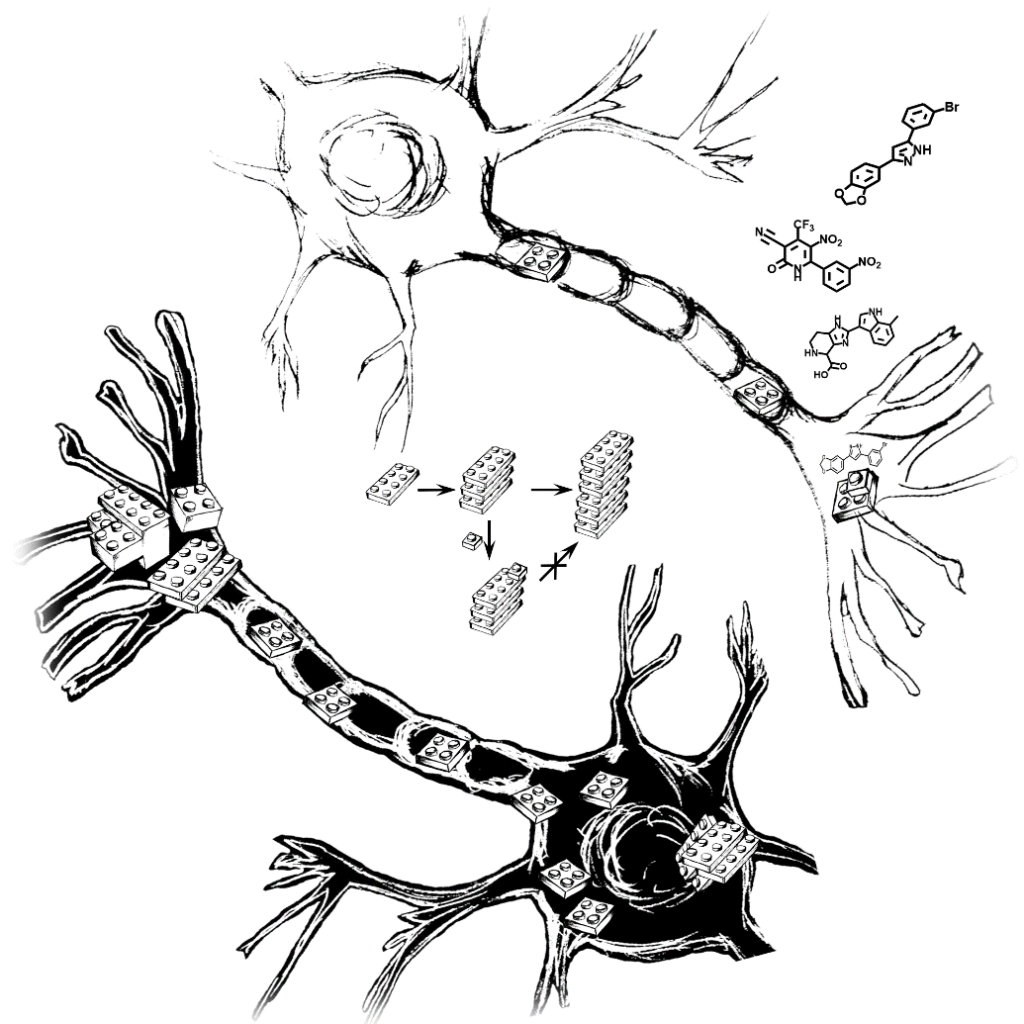Growth of α-synuclein amyloid fibrils is the key process of Parkinson’s disease, the second most common neurodegenerative disorder in the world affecting predominantly old people. The disease is yet incurable and all available treatments are only symptomatic. It stimulates a strong interest of researchers all over the world to search for the molecules able to stop or revert its progression. Unfortunately, the pathological misfolding of α-synuclein in amyloid form occurs via prion-like mechanism and does not depend on any enzyme or receptor. It makes the inhibitor development really challenging and leads to many false positive results reported in literature. The review critically discussed present situation with inhibitors targeting different stages of the process, their selectivity and limitations.
Particular attention was given to polyphenolic inhibitors and hypothesis of the common action mechanism based on their cross-linking ability directly connected to antioxidant properties.
The publication is available here: https://doi.org/10.1002/tcr.202300282
The review was prepared by Volodymyr Shvadchak in collaboration with his former PhD students from IOCB Prague. It reflects the research interest of his team working on development peptides and proteins highly selectively inhibiting α-synuclein amyloid fibril growth.



